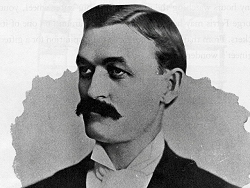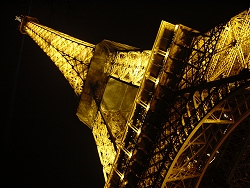|
.
The Ferris
Wheel has always occupied a strange and unique position in the amusement
industry. It doesnít provide the thrills of a roller coaster, and has
little of the intimidating qualities of other rides, but it nevertheless
occupies an exclusive place in the global psyche.
To many, no
major park or fair is complete without this most iconic of rides, and in
recent times, they have managed to break away from the rest of the
amusement industry, and have started to appear in places that would
never have seemed plausible just one short decade ago.
|

|
| George
Washington Gale Ferris. Credit: J.G. Ferris |
George
Washington Gale Ferris was born in Galesburg, Illinois in 1859, but his
family left in 1864, intending to go to California. An economic crisis
caused by the American Civil War meant they didnít have the money to
complete the journey, and instead the family settled in Nevadaís
Carson Valley, where his father, George Snr, bought a ranch.
They stayed
for six years, during which time George Jr fell in love with the rancher
lifestyle. One thing he found particularly fascinating was the Carson
Riverís large water wheel at Cradlebaugh Bridge, a contraption that
triggered a lifelong passion for engineering.
When the family left the ranch,
they moved to Carson City, where George Snr embarked on a project to
landscape the city, the results of which can still be seen today. In 1875, George Jr moved to Oakland to attend the
California Military Academy, and then to New York where, in 1881, he was
awarded a degree in civil engineering from Rensselear Polytechnic
School.
It was here than he met Margaret Ann Beatty, whom he
married in 1882. He initially worked in the contracting office of a
local rail company, but then began his solo engineering career by
designing bridges and tunnels. The increased use of steel saw him move
from New York to Pittsburgh, the centre of the American steel industry,
where he founded G.W.G. Ferris & Co, a company that tested and
inspected metals, primarily for bridges and railways.
|

|
| The
Ferris Wheel, like the Eiffel Tower, was envisaged as being the centrepiece
for a city expo |
In 1891, he
was invited to an Engineerís banquet in Chicago. One of the other
attendees was Daniel H. Burnham, one of the directors in charge of
planning the forthcoming 1893 Colombian Exhibition. During the
eveningís proceedings, Burnham invited the assembled engineers to
design a landmark for the event, similar in stature to the Eiffel Tower,
which had been such a spectacular centrepiece for the 1889 Paris
International Exposition.
Gustave
Eiffel himself offered to build a bigger tower for the fair, but this
was rejected, partly because the organisers wanted something unique, and
partly because of protests that the project should showcase American
design and ingenuity.
Ferris
later told reporters that the idea of the wheel came to him over dinner
one afternoon, where he immediately decided many of rideís finer
details, including itís size, how many cars it would have, and how it
would be built. Other engineers and the fair chiefs had little faith in
the idea, with many stating that Chicagoís famously windy skies would
prevent the ride from working properly, and possibly destroy the
structure completely.
Nevertheless,
Ferris spent $25,000 of his own money to prove that it could work, and
eventually succeeding in gaining permission to proceed, only for it to
be almost immediately withdrawn. Finally, a compromise was reached
whereby Ferris was refused funding, but allowed to go ahead if he
undertook the financial risk. Continues...
|